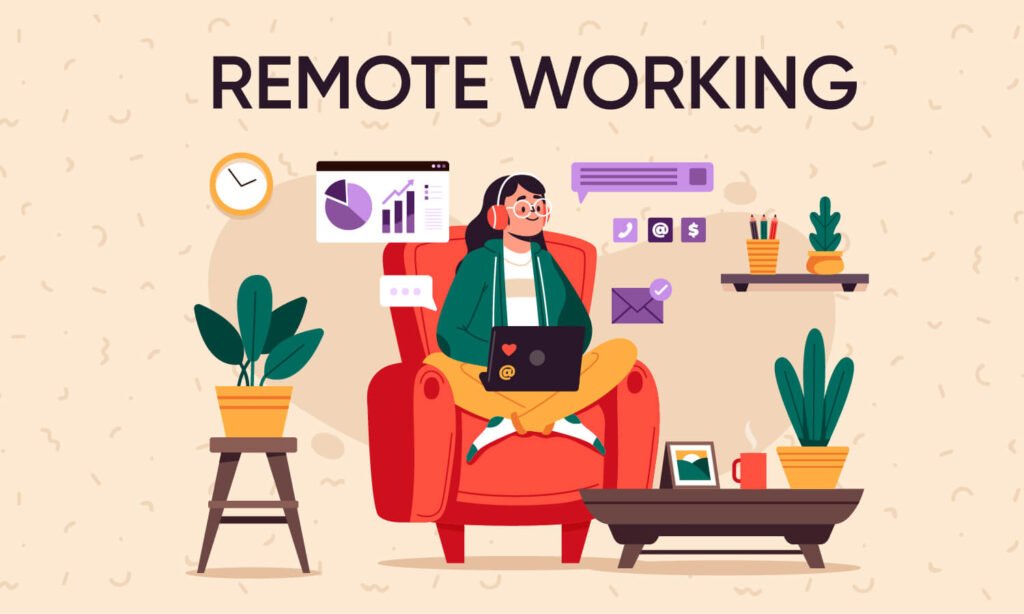Picture this: you’re in a stunning café overlooking the beaches of Canggu, Bali, ready to present to your biggest client, when suddenly your internet connection drops. The panic sets in as you frantically try to reconnect, knowing that thousands of digital nomads have faced this exact nightmare. In today’s remote work landscape, internet reliability for nomads isn’t just a convenience—it’s the foundation of your entire livelihood.
According to recent studies by the International Telecommunication Union, over 4.9 billion people worldwide have internet access, yet connection quality varies dramatically across regions. For digital nomads, this variance can mean the difference between closing a deal and losing a client. Whether you’re a seasoned location-independent professional or just starting your nomadic journey, understanding how to secure and maintain reliable internet connectivity is crucial for your success.
This comprehensive guide will equip you with everything you need to know about ensuring consistent internet access wherever your travels take you. From testing tools and backup solutions to negotiation strategies and troubleshooting techniques, you’ll discover how to build an unshakeable foundation for your remote work lifestyle.
Understanding Internet Reliability for Nomads: Core Concepts and Why It Matters
Internet reliability encompasses far more than just connection speed. For digital nomads, it involves consistent uptime, stable latency, sufficient bandwidth, and predictable performance throughout your workday. Unlike traditional office workers who enjoy dedicated IT support, nomads must become their own network administrators.
The three pillars of nomadic internet reliability include speed consistency (maintaining promised speeds throughout the day), connection stability (minimal disconnections or timeouts), and geographic coverage (reliable access across different locations). Research from Speedtest.net indicates that global average internet speeds have increased by 32% over the past two years, yet reliability metrics show significant regional variations.
Understanding these concepts becomes critical when your income depends on video calls, file uploads, and real-time collaboration. A connection that tests well at 2 AM might struggle during peak business hours. Successful nomads learn to evaluate internet reliability across different times, weather conditions, and usage scenarios before committing to any location for extended work periods.
The economic impact of unreliable internet extends beyond immediate frustration. Studies show that remote workers experiencing frequent connectivity issues report 23% lower productivity and increased stress levels. For nomads operating across time zones, missing scheduled calls due to connectivity problems can damage professional relationships and future opportunities.
Essential Tools and Apps to Test Nomad Internet Reliability Before You Work
Before settling into any workspace, smart nomads conduct thorough internet testing using specialized tools designed to reveal connection quality beyond basic speed tests. Speedtest by Ookla remains the gold standard for initial assessments, providing download speeds, upload speeds, ping times, and server locations that impact your connection quality.
However, comprehensive testing requires multiple tools working together. Netflix’s Fast.com offers quick speed checks optimized for streaming quality, while TestMy.net provides more detailed analysis including consistency ratings over extended periods. For nomads requiring video conferencing reliability, tools like SpeedCheck simulate real-world usage scenarios.
Advanced Testing Applications
- WiFi Unlimited – Comprehensive network analysis with historical data tracking
- WiFi Analyzer – Identifies network congestion and optimal channels
- PingPlotter – Tracks connection stability over time
- 1.1.1.1 Speed Test – Tests both speed and internet quality metrics
The key to effective testing lies in conducting multiple assessments throughout different times of day. Morning tests might show excellent performance, while evening results could reveal significant degradation due to increased local usage. Professional nomads typically run these tests for at least 24-48 hours before making workspace commitments, especially for important remote work projects.
Best Countries and Cities for Reliable Digital Nomad Internet Connections
Global internet infrastructure varies dramatically, with some countries offering world-class connectivity while others struggle with basic reliability. According to the latest Global Internet Report, South Korea, Singapore, and Estonia consistently rank among the top destinations for internet reliability, offering average speeds exceeding 100 Mbps with exceptional uptime records.
In Europe, cities like Tallinn, Amsterdam, and Zurich provide exceptional digital infrastructure specifically designed to attract remote workers. These locations offer average download speeds of 80+ Mbps with 99.5% uptime reliability. For nomads seeking the best countries for remote work, these destinations combine excellent connectivity with nomad-friendly visa policies.
Top-Tier Nomad Internet Destinations
- Singapore – Average 200+ Mbps, fiber-optic coverage nationwide
- South Korea (Seoul, Busan) – World’s fastest average speeds, extensive 5G coverage
- Estonia (Tallinn) – Digital-first government, excellent rural coverage
- Portugal (Lisbon, Porto) – Growing nomad community, reliable coastal connectivity
- Taiwan (Taipei) – Excellent infrastructure, nomad-friendly policies
Emerging nomad destinations like Mexico City, Medellín, and Cape Town have invested heavily in digital infrastructure improvements. These cities now offer reliable internet at significantly lower costs, making them attractive for budget-conscious nomads. However, reliability can vary significantly between neighborhoods, making thorough pre-arrival research essential for successful digital nomad lifestyle optimization.
Backup Internet Solutions When Your Primary Connection Fails
Even the most reliable primary connections can fail, making backup internet solutions absolutely essential for professional nomads. Redundancy planning involves preparing multiple connection options before you need them, ensuring business continuity regardless of local infrastructure problems or service disruptions.
Mobile hotspot devices represent the most common backup solution, but effectiveness varies significantly by location and carrier. Research from telecommunications analysis firms indicates that having SIM cards from at least two different local providers increases connection reliability by up to 67%. Popular international hotspot solutions include Skyroam Solis and GlocalMe, though costs can escalate quickly for heavy usage.
Comprehensive Backup Strategies
- Dual-SIM smartphones with local carriers for instant failover capability
- Portable WiFi routers supporting multiple network technologies
- Satellite internet solutions like Starlink for remote locations
- Coworking space memberships providing guaranteed backup workspace access
- Hotel business centers as emergency workspace alternatives
Smart nomads also leverage technology solutions like Connectify for connection bonding, combining multiple internet sources into a single, more reliable connection. This approach proves particularly valuable during important client calls or time-sensitive project deadlines where connection failure isn’t an option.
The investment in backup solutions typically ranges from $50-200 monthly, depending on data requirements and geographic coverage needs. While this might seem expensive, the cost of lost business from connection failures often exceeds backup investment costs within a single incident.
How to Negotiate Better Internet Reliability in Accommodations and Workspaces
Successful negotiation for better internet requires understanding what hosts and workspace operators can realistically provide. Before booking any accommodation, request specific internet details including provider name, package type, maximum speeds, and recent speed test results. Professional hosts increasingly understand that internet quality directly impacts their reviews and bookings.
When communicating with potential hosts, frame internet requirements in business terms rather than personal preferences. Explain your work schedule, bandwidth requirements for video conferencing, and the importance of consistent connectivity for your professional responsibilities. Many hosts are willing to upgrade their internet packages to attract longer-term nomad guests who provide steady income.
Effective Negotiation Strategies
- Document specific requirements – Provide detailed bandwidth and reliability needs
- Offer longer stays – Extended bookings justify internet infrastructure investments
- Propose cost-sharing – Split upgrade costs for premium packages
- Provide testing tools – Share speed test apps for verification
- Request trial periods – Arrange short stays to test connectivity before committing
For coworking spaces, approach negotiations differently by emphasizing your professional needs and potential for becoming a regular member. Many spaces offer priority network access or dedicated connections for members paying premium rates. Some progressive coworking operators now guarantee specific uptime percentages and provide service level agreements for professional members.
Always get internet commitments in writing, including specific speeds, acceptable downtime limits, and remediation procedures when problems occur. This documentation proves invaluable when issues arise and creates accountability for accommodation providers to maintain promised service levels.
Mobile Data vs WiFi: Choosing the Most Reliable Internet for Nomads
The choice between mobile data and WiFi for primary internet access depends heavily on location, usage patterns, and budget considerations. Mobile data offers independence and consistency, while WiFi provides cost-effectiveness for high-bandwidth activities. Most successful nomads use hybrid approaches, strategically combining both technologies for optimal reliability and cost management.
Mobile networks have invested heavily in 4G and 5G infrastructure, with many countries now offering mobile speeds exceeding typical WiFi connections. According to recent telecommunications reports, countries like South Korea, Norway, and the UAE provide mobile download speeds averaging 60+ Mbps with excellent coverage areas extending well beyond urban centers.
Mobile Data Advantages
- Location independence – Work from anywhere with cellular coverage
- Consistent performance – Dedicated bandwidth not shared with other users
- Security benefits – Reduced exposure to public WiFi vulnerabilities
- Backup availability – Always available when WiFi fails
WiFi Advantages
- Cost effectiveness – Often included with accommodations
- Higher speed potential – Fiber connections can exceed mobile capabilities
- Unlimited usage – No data caps for bandwidth-intensive activities
- Lower battery drain – Extends device battery life significantly
Professional nomads typically use mobile data for critical activities like video calls and file uploads, while relying on WiFi for large downloads, streaming, and general browsing. This hybrid approach maximizes reliability while controlling costs, especially in countries where mobile data prices remain high relative to local income levels.
Common Internet Connectivity Problems Digital Nomads Face and How to Solve Them
Digital nomads encounter predictable connectivity challenges that can derail productivity if not properly addressed. Slow upload speeds represent the most common complaint, as many internet packages prioritize download speeds while neglecting upload capabilities crucial for video conferencing and file sharing.
Network congestion during local peak hours creates another frequent frustration. Internet speeds that test excellently at 6 AM might become unusable by 8 PM when local users return home from work. This challenge particularly affects nomads working across time zones, where their productive hours coincide with local peak usage periods.
Common Problems and Solutions
- Slow Upload Speeds
- WiFi Password Issues
- Download WiFi password recovery tools
- Learn key phrases for requesting passwords in local languages
- Use QR code generators for easy password sharing
- Geographic Restrictions
- Invest in reliable VPN services like NordVPN or ExpressVPN
- Understand local internet regulations and compliance requirements
- Test VPN performance before relying on geo-blocked services
DNS resolution problems frequently cause connectivity issues that appear as complete internet failures. Switching to public DNS servers like Google DNS (8.8.8.8) or Cloudflare DNS (1.1.1.1) often resolves these problems immediately. Many nomads configure these DNS servers as defaults on all devices to prevent location-specific DNS issues.
Hardware compatibility issues can also create unexpected connectivity problems. Different countries use varying electrical standards and WiFi frequency allocations. Nomads should research local technical standards before travel and carry appropriate adapters for both power and network compatibility.
Building Your Complete Internet Reliability Toolkit for Remote Work
A comprehensive internet reliability toolkit combines hardware, software, and service components designed to ensure connectivity regardless of local conditions. Professional nomads treat internet reliability as mission-critical infrastructure, investing in redundant systems that provide multiple failover options when primary connections encounter problems.
The foundation of any reliability toolkit starts with portable hardware capable of creating and optimizing internet connections. A quality travel router like the GL.iNet series provides VPN capabilities, connection bonding, and network optimization features. Combined with dual-SIM mobile hotspots, this hardware foundation enables connection flexibility across diverse geographic and technical environments.
Essential Toolkit Components
- Hardware Foundation
- Portable travel router with VPN and bonding capabilities
- Dual-SIM mobile hotspot device
- Universal power adapters and USB charging solutions
- Network cables and WiFi range extenders
- Software Solutions
- Network monitoring apps like Speedtest and WiFi Unlimited
- VPN services with multiple server locations
- Connection bonding software like Speedify
- Bandwidth management tools for optimal performance
- Service Subscriptions
- International data plans from multiple providers
- Coworking space memberships in target cities
- Cloud storage services with offline sync capabilities
- Communication platforms with low-bandwidth modes
Regular toolkit maintenance ensures reliability when you need it most. Monthly testing of backup devices, updating software applications, and verifying service account status prevents surprise failures during critical work periods. Many experienced nomads schedule monthly “disaster recovery drills” to test their complete backup procedures and identify potential improvements.
Budget allocation for internet reliability typically represents 10-15% of total nomadic expenses, though this investment pays dividends through improved productivity and reduced stress. The toolkit approach allows nomads to work confidently in challenging environments while maintaining professional service levels regardless of local infrastructure limitations.
Mastering internet reliability for nomads requires combining technical knowledge, practical tools, and strategic planning to create robust connectivity solutions. From understanding core reliability concepts to building comprehensive backup systems, successful nomads treat internet connectivity as the foundation of their location-independent lifestyle rather than an afterthought.
The strategies outlined in this guide provide a roadmap for achieving consistent connectivity across diverse global environments. Whether you’re negotiating with accommodation providers, choosing between mobile data and WiFi, or building your reliability toolkit, remember that investment in internet infrastructure directly impacts your professional success and quality of life.
Start implementing these reliability strategies before your next nomadic adventure. Test your backup systems, research your destination’s connectivity landscape, and prepare for the inevitable connectivity challenges that await every digital nomad. With proper preparation and the right tools, you can maintain professional productivity while exploring the world’s most exciting destinations.



